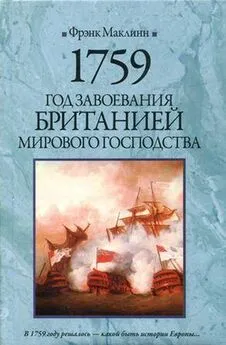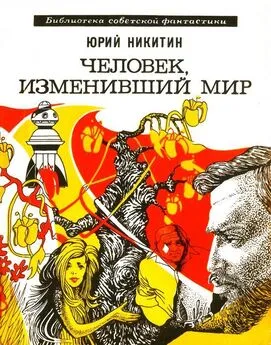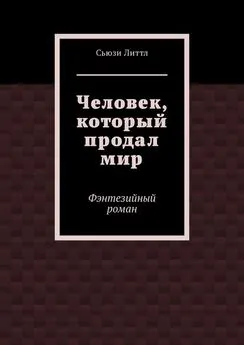Фрэнк Маклинн - Чингисхан. Человек, завоевавший мир
- Название:Чингисхан. Человек, завоевавший мир
- Автор:
- Жанр:
- Издательство:АСТ
- Год:2019
- Город:Москва
- ISBN:978-5-17-095186-4
- Рейтинг:
- Избранное:Добавить в избранное
-
Отзывы:
-
Ваша оценка:
Фрэнк Маклинн - Чингисхан. Человек, завоевавший мир краткое содержание
Чингисхан. Человек, завоевавший мир - читать онлайн бесплатно ознакомительный отрывок
Интервал:
Закладка:
2482
Anatoly M. Khazanov, 'Muhammad and Jenghis Khan Compared: The Religious Factor in Empire Building,' Comparative Studies in Society and History 35 (1993) рр. 461–479.
2483
J. J. Saunders, 'The Nomad as Empire-Builder: A Comparison of the Arab and Mongol Conquests,' in Rice, Muslims and Mongols pp. 36–66.
2484
Schurmann, Economic Structure pp. 66–67; Thomas T. Allsen, 'Mongol Census-Taking in Rus', 1245–1275,' Harvard Ukraine Studies 5 (1981) pp. 32–53 (at pp. 33–36).
2485
Hans Bielenstein, 'Chinese Historical Demography ad 2–1982,' Bulletin of the Museum of Far Eastern Antiquities 59 (1987) pp. 85–88; Ping-ti Ho, 'An Estimate of the Total Population of Sung-Chin China,' in Fran^oise Aubin, ed. Etudes Song pp. 3–53.
2486
May, Mongol Conquests p. 224.
2487
Brook, Troubled Empire pp. 42–44.
2488
Brook, Troubled Empire p. 45; Fitzgerald, China pp. 312–315.
2489
Buell, Dictionary pp. 211–215; Brown, History of Climate Change p. 218; J. D. Durand, 'Population Statistics of China, ad 2–1953,' Population Studies 13 (1960) pp. 209–256. Morgan, Mongols p. 83 estimates the population of Jin China as 100 million before the Mongol conquest and 70 million after. For Champa rice see Ping-ti Ho, 'Early-Ripening Rice in Chinese History,' Economic History Review 18 (1956) pp. 200–218.
2490
Pinker, Better Angels pp. 94, 707 cites the high figures. Fitzgerald, China pp. 314, 624 regards such high figures as risible.
2491
Graff, Medieval Chinese Warfare p. 240; Twitchett, Sui and T'ang China.
2492
Fairbank, Late Ch'ing pp. 264–350.
2493
Fairbank & Feuerwerker, Republican China.
2494
Chalmers Johnson, 'The Looting of Asia', London Review of Books 25 (20 November 2003) pp. 3–6.
2495
Wedgwood, Thirty Years War.
2496
Hochschild, King Leopold's Ghost pp. 226–232.
2497
Franke & Twitchett, Cambridge History p. 622. McEvedy & Jones, World Population History p. 172 accepts a decline in population from 115 million to 85 million as a result of the Mongol invasions. The nineteenth-century scholar Jeremiah Curtin thought that the death toll from the Mongols in China (including Hsi-Hsia) was 18,500,000 in 1211–23 alone (Mongols p. 141).
2498
For the difficulty even of estimating the population of Samarkand see Schafer, Golden Peaches p. 280.
2499
David O. Morgan, 'Ibn Battuta and the Mongols,' Journal of the Royal Asiatic Society, 3rd series 11 (2001) pp. i-ii. See also Dunn, Adventures of Ibn Battuta.
2500
Authors prepared to accept a figure of 15 million fatalities in the defeat of the Khwarezmian empire and the 'mopping up' operations against Jalal al-Din include Ward, Immortal p. 39; Rummel, Death by Government pp. 48–51; Macfarlane, Savage Wars p. 50; Grant, Battle pp. 92–94.
2501
Josiah C. Russell, 'Population in Europe,' in Cipolla, Economic History pp. 25–71.
2502
Morgan, Mongols p. 83. Godbey, Lost Tribes a Myth p. 385 wants to downsize this to only 20 million. Pinker, Better Angels pp. 235–237 has been derided for his suggestion of 40 million deaths but, it seems, exaggerates only slightly. McEvedy & Jones World Population History pp. 170–173 steer a middle course and estimate 25 million; see also White, Atrocities.
2503
Barthold, Turkestan p. 461.
2504
Lattimore, 'Chingis Khan and the Mongol Conquests,' Scientific American 209 (1963) p. 62; Rachewiltz, Papal Envoys p. 65.
2505
Noreen Gilfney, 'Monstrous Mongols,' Postmedieval 3 (2012) pp. 227–245.
2506
SHR pp. 181–186.
2507
George Lane, 'The Mongols in Iran,' in Daryaee, Iranian History pp. 243–270 (at p. 249).
2508
Bretschneider, Mediaeval Researches I p. 93.
2509
Halperin, Golden Horde p. 22.
2510
For this position see Schmidt, Tarnovsky & Berkhin, USSR pp. 29–30; Wittfogel, Oriental Despotism p. 225; Gleason, Russian History p. 78.
2511
Ostrowski, Muscovy and the Mongols is a detailed, point-by-point (and convincing) refutation of the 'Mongol yoke' in every facet of Russian life.
2512
Charles J. Halperin, 'George Vernadsky, Eurasianism, the Mongols and Russia,' Slavic Review 41 (1982) pp. 477–493; Halperin, Golden Horde.
2513
David B. Miller, 'Monumental Building as an Indicator of Economic Trends in Northern Rus' in the late Kievan and Mongol Periods 1138–1462,' American Historical Review 94 (1989) pp. 360–390.
2514
Ostrowski, Muscovy and the Mongols pp. 64–68.
2515
Dawson, Mongol Mission p. 18; Jackson & Morgan, Rubruck pp. 90–91; Latham, Travels of Marco Polo p. 98; Yule, Ser Marco Polo I p. 252.
2516
Halperin, Golden Horde p. 116.
2517
Ostrowski, Muscovy and the Mongols pp. 7, 63; Vernadsky, Mongols and Russia pp. 364–366.
2518
Gumilev, Imaginary Kingdom pp. 222–223; Khazanov, Nomads and the Outside World pp. 152–164.
2519
Barthold, Four Studies I p. 43.
2520
Yule & Cordier, Cathay II pp. 287–291; III pp. 137–173.
2521
Ciociltan, Black Sea Trade pp. 2, 20–21.
2522
Hamby, Central Asia p. 123.
2523
Abu-Lughod, Before European Hegemony pp. 153–184; Adshead, Central Asia pp. 3–5, 26–27, 53; Gary Seaman, 'World Systems and State Formation on the Inner Eurasian Periphery,' in Seaman & Marks, Rulers from the Steppe pp. 1–20; Ruotsala, Europeans and Mongols.
2524
Asimov & Bosworth, History of Civilizations, iv part 2 pp. 221–226.
2525
Asimov & Bosworth, History of Civilizations, iv part 2 pp. 389–394, 451–453.
2526
H. Franke, 'Sino-Western Contacts under the Mongol Empire,' Journal of the Royal Asiatic Society 6 (1966) pp. 59-д; Heissig & Muller, Mongolen pp. 54–57.
2527
Pegolotti, Pratica della mercatura p. 22.
2528
Larner, Marco Polo p. 28; Reichert, Begegnungen mit China pp. 83–84; Jackson, Mongols in the West pp. 309–310.
2529
Hodong Kim, 'The Unity of the Mongol Empire and Continental Exchanges over Eurasia,' Journal of Central Eurasian Studies I (2009) pp. 15–42 (at p. 16).
2530
Также Иоанн Монтекорвинский, францисканский миссионер, первый в истории архиепископ Пекинский. — Прим. пер .
2531
For John of Montecorvino see Yule, Cathay I pp. 165–173, 197–221; Beazley, Dawn of Modern Geography III pp. 162–178, 206–210.
2532
Denise Aigle, 'De la "non negotiation" а l'alliance aboutie: Reflexions sur la diplomatic entre les Mongols et l'Occident latin,' Oriente Moderno 88 (2008) pp. 395–434.
2533
Abu-Lughod, World System p. 18.
2534
RT III pp. 565–566, 605–606; Ricci, Marco Polo pp. 16–17; Yule, Cathay III p. 49; J. Richard, Papaute et les missions pp. 145–146; Abu-Lughod, World System pp. 185–211.
2535
Thomas T. Allsen, 'Mongolian Princes and their Merchant Partners, 1200–1260,' Asia Major, 3rd series 2 (1989) pp. 83–126.
2536
McNeill, Plagues and Peoples pp. 93, 102–120, 134, 140–147.
2537
Необычная ( лат .).
2538
Owen Lattimore, 'Feudalism in History,' Past and Present 12 (1957) pp. 47–57.
2539
Rachewiltz, Papal Envoys p. 65. For criticisrhs of 'nomadic feudalism' and indeed the Mongol system as in any way feudal see Bold, Nomadic Society pp. 21–24; Khazanov, Nomads and the Outside World pp. 132, 135, 139, 144, 159, 255.
2540
Rachewiltz, Papal Envoys pp. 66–67; Vernadsky, Mongols and Russia pp. 118, 213, 339–341.
2541
Lattimore, Inner Asian Frontiers pp. 61–65, 361–365.
2542
Anderson, Passages from Antiquity p. 223.
2543
Vernadsky, Mongols and Russia pp. 130–131.
2544
Lattimore, Inner Asian Frontiers pp. 519–523.
2545
Fletcher, 'The Mongols' p. 50.
2546
See the outstanding analysis by Anderson, Passages from Antiquity pp. 218–225.
2547
Almaz Khan, 'Chinggis Khan from Imperial Ancestor to Ethnic Hero,' in Harrell, Cultural Encounters pp. 248–277; P. L. W Sabloff, 'Genghis Khan, Father of Mongolian Democracy,' in Sabloff, Modern Mongolia pp. 225–251.
2548
In his play Axel (1890). See Bourre, Villiers de L'Isle-Adam.
2549
Armstrong et al, Francis of Assisi: Early Documents.
2550
SHO pp. 93, 197–199; SHR pp. 43, 139–141.
2551
A. Mostaert, 'A propos d'une priere au feu,' in Poppe, American Studies in Altaic Linguistics pp. 191–223; Heissig, Religions of Mongolia pp. 48–59.
2552
E. Lot-Falck, 'A propos d'Atugan, deesse mongole de la terre,' Revue de I'Histoire des Religions 149 (1956) pp. 157–196; Yule & Cordier, Marco Polo I pp. 257–259; Heissig, Religions pp. 7, 76–84.
2553
N. Poppe, 'Zum Feuerkultus bei den Mongolen,' Asia Minor 2 (1925) pp. 130–145 (at p. 141).
2554
Rachewiltz, Commentary pp. 329–331; Heissig, Religions pp. 84–90.
2555
Moule & Pelliot, Marco Polo I pp. 199–200; Baldick, Animal and Shaman pp. 95, 104, 108.
2556
P. Pelliot, 'Notes sur le "Turkestan",' T'oung Pao 26 (1929) pp. 113–182 (at p. 133); Yule & Cordier, Marco Polo I p. 257; Moule & Pelliot, Marco Polo p. 257; Heissig, Religions pp. 102–110.
2557
Moule & Pelliot, Marco Polo I p. 170.
2558
Heissig, Religions pp. 6–7, 46.
2559
Dawson, Mongol Mission p. 7.
2560
Heissig, Religions p. 35.
2561
Hutton, Shamans pp. 47–49; Caroline Humphrey, 'Shamanic Practices and the State in Northern Asia,' in Thomas & Humphrey, Shamanism pp. 191–228 (at p. 208); Humphrey & Onon, Shamans and Elders p. 51.
Читать дальшеИнтервал:
Закладка:



![Ксения Чепикова - Человек, научивший мир читать [История Великой информационной революции]](/books/1059757/kseniya-chepikova-chelovek-nauchivshij-mir-chitat-ist.webp)



